Research projects describe insights about communicating engaging and empowering practical information in line with Australian Dietary Guidelines.
Studies include qualitative and quantitative studies of attitudes, beliefs and behaviours (1 – 2), social return on investment analysis (3) and consumer-testing of material to optimise communication of dietary information (unpublished).
Engaging and empowering
Practical information about buying, preparing and serving balanced meals with no food waste is a key strategy for promoting sustainable eating [5] but there is a gap between research and practice [4].
- Price is a key driver of food choices and integration of practical information about buying, preparing and serving balanced meals with tips to reduce food waste is well received across all age groups with 66% of Australians agreeing “I can see myself applying this to the way I eat” [1].
- Practical information, based around popular meals and ingredients, with flexibility for swaps, empowers different socio-economic and cultural population groups in Australia to personalise choices [2].
- The retail setting is a key source of easily accessible product and nutrition information required to inform choices in line with Australian Dietary Guidelines since most Australians have home-prepared meals more than 5 nights per week [2].
- Equipping health professionals with robust practical resources improves their ability and confidence to communicate practical information in clinical and retail settings and creates social value by improving job efficiency, job satisfaction and reputation [3].
- Our brochure and our Red Meat Guide aligns with the National Obesity Strategy 2022-2032 (2.1), the National Food Waste Strategy and the 2013 Australian Dietary Guidelines (Appendix G).
Addresses barriers for key life stages
Early Childhood
- Practical information about adapting the family meal to feed babies and toddlers with appropriate food textures addresses barriers, including time pressures and lack of cooking confidence e.g., preparing smooth and lumpy textures [6].
- Our brochure aligns with the Infant Feeding Guidelines that recommends introducing iron-rich foods from 6 months of age. In addition, practical information accommodates both traditional spoon feeding and baby-led weaning practices.
Young women
- Getting enough iron is a challenge for young women and practical tips and meal ideas about eating red meat three to four times a week in light meals addresses barriers, including limited knowledge and understanding of the role of bioavailable iron [6].
- Our fact sheet aligns with Nutrient Reference Values for iron which indicates iron absorption is about 18% from a mixed western diet including animal foods and about 10% from a vegetarian diet.
Older adults
- Explaining food choices and combinations that provide 25g of protein per meal addresses barriers to eating enough protein recommended for muscle health, including preparing meals for smaller appetites, single person households, moist food textures and decreasing interest in meal preparation [6].
- Our fact sheet aligns with Nutrient Reference Values for protein which indicates protein requirements increase from 70 years of age and evidence suggesting 2 to 3 meals per day should contain 25g of protein [7].
